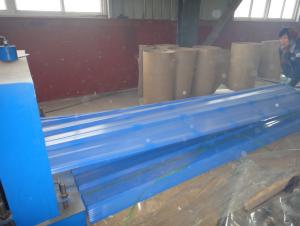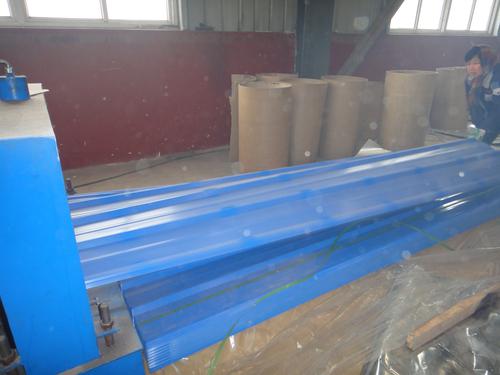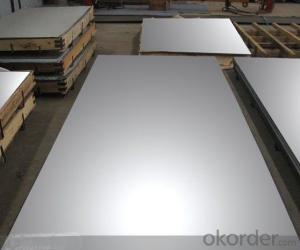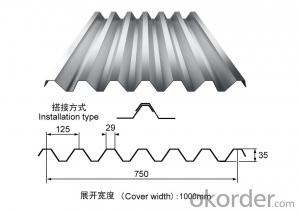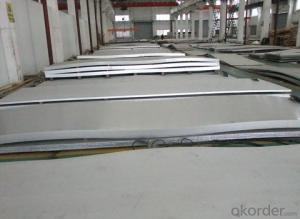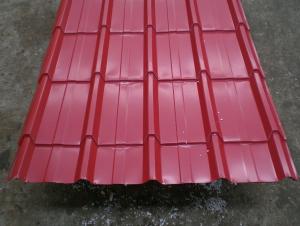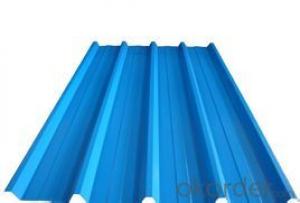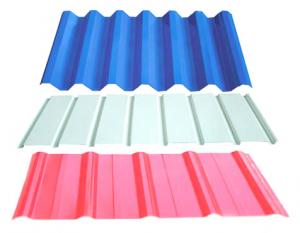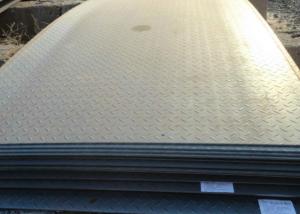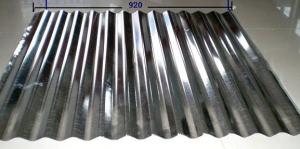color coated roofing sheet
- Loading Port:
- China Main Port
- Payment Terms:
- TT OR LC
- Min Order Qty:
- -
- Supply Capability:
- -
OKorder Service Pledge
Quality Product, Order Online Tracking, Timely Delivery
OKorder Financial Service
Credit Rating, Credit Services, Credit Purchasing
You Might Also Like
color coated roofing sheet
1) Quality Standard & Grade: JIS G3302, SGCC / ASTM 653M CQ/ EN10142 DX51D+Z
2) Zinc coating : 50g/m2
3) color film thickness:20micro(doubled)
4) Surface Treatment: chromated , non oiled, skin passed
5) Packing: export standard packing,packed with moisture resistant paper and metal
wrapping,securely tied for export,on metal skids) Country of Origin :
SIZE:0.25mm*840mm(1000mmBEFORE)*3660MM
COLOR:BLUE
- Q: What are the rental costs for steel sheet piles?
- Steel sheet pile cofferdam is the most commonly used sheet pile cofferdam. Steel sheet pile with a steel lock, the section is provided with a straight groove shape, and Z shape, there are a variety of sizes and interlocking form. There is a common type of Larson, Lackawanna type etc..
- Q: Are steel sheets suitable for exterior cladding?
- Yes, steel sheets are suitable for exterior cladding. Steel is a durable and strong material that can withstand various weather conditions, including harsh sunlight, heavy rain, and extreme temperatures. It is resistant to corrosion and does not warp or rot like some other materials. Steel sheets are also available in a variety of colors and finishes, allowing for a wide range of design options. Additionally, steel cladding is easy to install and maintain, making it a popular choice for exterior applications. Overall, steel sheets provide a reliable and aesthetically pleasing option for exterior cladding.
- Q: What is the average cost of stainless steel sheets?
- The average cost of stainless steel sheets can vary depending on various factors such as the grade of stainless steel, the thickness of the sheets, the size of the sheets, and the supplier. On average, stainless steel sheets can range in price from $30 to $300 per sheet. Lower-grade stainless steel sheets tend to be more affordable, while higher-grade ones can be more expensive. Additionally, thicker sheets are generally more costly than thinner ones due to the increased amount of material used. It is important to consider these factors and shop around to find the best price and quality that suits your specific needs.
- Q: Do the steel sheets have any sharp edges?
- Yes, steel sheets often have sharp edges due to the manufacturing process and their intended purpose.
- Q: Are the steel sheets suitable for water tank fabrication?
- Yes, steel sheets are suitable for water tank fabrication. Steel is a strong and durable material that can withstand the weight of water and provide structural support. It is also resistant to corrosion when properly coated or treated, ensuring that the water stored in the tank remains clean and uncontaminated. Additionally, steel sheets can be easily molded and shaped to meet specific design requirements for water tanks. Overall, steel sheets are a reliable and commonly used material for water tank fabrication.
- Q: What are the different types of steel sheet surface coatings for corrosion resistance?
- There are several types of steel sheet surface coatings available for corrosion resistance, including galvanized coatings, zinc-rich coatings, aluminum coatings, and organic coatings such as paint or epoxy. Each coating offers unique benefits and application suitability depending on the specific requirements and environmental conditions.
- Q: Are steel sheets suitable for magnetic shielding applications?
- Indeed, magnetic shielding applications find steel sheets to be fitting. Being a magnetic material, steel possesses the capability to redirect magnetic fields effectively, thereby diminishing their intensity or averting their access to specific regions. Employing steel sheets as a barricade ensures the protection of delicate electronic equipment and devices against external magnetic interference. The thickness and composition of the steel sheet can be modified accordingly to attain the desired degree of magnetic shielding. Furthermore, steel sheets are frequently deemed economical and easily accessible, rendering them a pragmatic selection for magnetic shielding applications.
- Q: What is the difference between a HRPO and HRSPO steel sheet?
- HRPO and HRSPO are two types of steel sheets that differ in the way they are manufactured and their resulting properties. HRPO, which stands for Hot Rolled Pickled and Oiled, involves subjecting a hot rolled steel coil to a pickling process. This process removes impurities and scale from the surface using an acid bath. After pickling, the steel sheet is oiled to prevent corrosion during storage and transportation, resulting in a smooth and clean surface finish. On the other hand, HRSPO, which stands for Hot Rolled Skin Passed and Oiled, goes through an additional process called skin pass after pickling and oiling. During this process, the steel sheet is passed through a set of rolls to improve the surface finish and reduce its thickness. The skin pass process also gives the steel a certain level of cold work, enhancing its mechanical properties. In terms of properties, HRPO steel sheets have good formability, weldability, and paintability due to their clean surface and lack of scale. They are commonly used in applications that require a smooth surface finish, such as appliances, automotive parts, and exposed architectural components. HRSPO steel sheets, on the other hand, have an even better surface finish and reduced thickness compared to HRPO sheets. This makes them ideal for demanding applications where precise dimensional control and surface aesthetics are crucial, such as automotive body panels, electrical enclosures, and furniture manufacturing. In summary, the main difference between HRPO and HRSPO steel sheets lies in the additional skin pass process that HRSPO undergoes. This process results in improved surface finish, reduced thickness, and enhanced mechanical properties. The choice between the two types of steel sheets depends on the specific requirements of the application, such as surface quality, dimensional control, and mechanical performance.
- Q: How do steel sheets perform in terms of thermal expansion?
- Steel sheets have a relatively low coefficient of thermal expansion, meaning they expand and contract minimally when subjected to changes in temperature. This makes them excellent for applications where thermal stability is crucial, as they can maintain their shape and dimensions without warping or distorting.
- Q: Can steel sheets be used for mezzanine flooring?
- Yes, steel sheets can be used for mezzanine flooring. Steel sheets offer several advantages for mezzanine flooring, including their strength, durability, and versatility. Steel sheets are able to withstand heavy loads and provide a stable and reliable flooring solution. Additionally, they can be easily customized to fit specific dimensions and requirements, making them adaptable for different mezzanine designs. Steel sheets are also resistant to fire, moisture, and pests, ensuring a long-lasting and low-maintenance flooring option. Overall, steel sheets are a popular choice for mezzanine flooring due to their strength, durability, and flexibility.
Send your message to us
color coated roofing sheet
- Loading Port:
- China Main Port
- Payment Terms:
- TT OR LC
- Min Order Qty:
- -
- Supply Capability:
- -
OKorder Service Pledge
Quality Product, Order Online Tracking, Timely Delivery
OKorder Financial Service
Credit Rating, Credit Services, Credit Purchasing
Similar products
Hot products
Hot Searches
Related keywords
